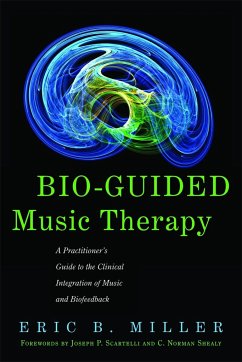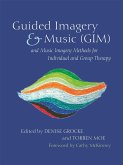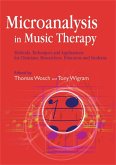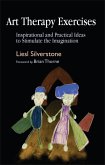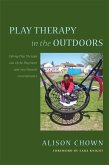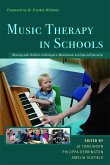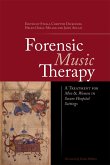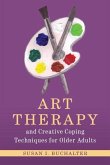Eric B. Miller
Bio-Guided Music Therapy
A Practitioner's Guide to the Clinical Integration of Music and Biofeedback
Eric B. Miller
Bio-Guided Music Therapy
A Practitioner's Guide to the Clinical Integration of Music and Biofeedback
- Broschiertes Buch
- Merkliste
- Auf die Merkliste
- Bewerten Bewerten
- Teilen
- Produkt teilen
- Produkterinnerung
- Produkterinnerung
This practical guide introduces the principles of biofeedback and explores the use of music therapy interventions in the context of achieving skills in self-regulation of physiological response. The book looks at the primary modalities of biofeedback, in conjunction with the assignment of digitally sampled musical voices to specific body functions.
Andere Kunden interessierten sich auch für
![Guided Imagery & Music (GIM) and Music Imagery Methods for Individual and Group Therapy Guided Imagery & Music (GIM) and Music Imagery Methods for Individual and Group Therapy]() Guided Imagery & Music (GIM) and Music Imagery Methods for Individual and Group Therapy50,99 €
Guided Imagery & Music (GIM) and Music Imagery Methods for Individual and Group Therapy50,99 €![Microanalysis in Music Therapy Microanalysis in Music Therapy]() Microanalysis in Music Therapy54,99 €
Microanalysis in Music Therapy54,99 €![Art Therapy Exercises Art Therapy Exercises]() Liesl SilverstoneArt Therapy Exercises32,99 €
Liesl SilverstoneArt Therapy Exercises32,99 €![Play Therapy in the Outdoors Play Therapy in the Outdoors]() Alison ChownPlay Therapy in the Outdoors37,99 €
Alison ChownPlay Therapy in the Outdoors37,99 €![Music Therapy in Schools Music Therapy in Schools]() Music Therapy in Schools57,99 €
Music Therapy in Schools57,99 €![Forensic Music Therapy Forensic Music Therapy]() Forensic Music Therapy51,99 €
Forensic Music Therapy51,99 €![Art Therapy and Creative Coping Techniques for Older Adults Art Therapy and Creative Coping Techniques for Older Adults]() Susan BuchalterArt Therapy and Creative Coping Techniques for Older Adults42,99 €
Susan BuchalterArt Therapy and Creative Coping Techniques for Older Adults42,99 €-
-
-
This practical guide introduces the principles of biofeedback and explores the use of music therapy interventions in the context of achieving skills in self-regulation of physiological response. The book looks at the primary modalities of biofeedback, in conjunction with the assignment of digitally sampled musical voices to specific body functions.
Hinweis: Dieser Artikel kann nur an eine deutsche Lieferadresse ausgeliefert werden.
Hinweis: Dieser Artikel kann nur an eine deutsche Lieferadresse ausgeliefert werden.
Produktdetails
- Produktdetails
- Verlag: Jessica Kingsley Publishers
- Seitenzahl: 256
- Erscheinungstermin: 15. Juni 2011
- Englisch
- Abmessung: 228mm x 151mm x 22mm
- Gewicht: 388g
- ISBN-13: 9781849058445
- ISBN-10: 184905844X
- Artikelnr.: 33142947
- Herstellerkennzeichnung
- Libri GmbH
- Europaallee 1
- 36244 Bad Hersfeld
- gpsr@libri.de
- Verlag: Jessica Kingsley Publishers
- Seitenzahl: 256
- Erscheinungstermin: 15. Juni 2011
- Englisch
- Abmessung: 228mm x 151mm x 22mm
- Gewicht: 388g
- ISBN-13: 9781849058445
- ISBN-10: 184905844X
- Artikelnr.: 33142947
- Herstellerkennzeichnung
- Libri GmbH
- Europaallee 1
- 36244 Bad Hersfeld
- gpsr@libri.de
Eric B. Miller
Acknowledgements. Foreword by Joseph P. Scartelli. Foreword by C. Norman
Shealy. About this Book. Introduction. Part 1: Historical and Theoretical
Background. Personal Experiences at the Juncture of Music and Physiology.
1. Historical Background. 2. Shifting Healthcare Paradigms.
Holistic/Reductionist Split. Music Therapy from the Holistic Perspective.
3. The Process of Gaining Legitimacy. What Constitutes Legitimacy?
Individual Persistence. Grassroots Organization. Convincing Medical
Research. Grandstanding with Music Therapy. Music Therapy and EEG from the
Biomedical Perspective. 4. A Case for Integrating Music Therapy and
Biofeedback. What is Music Therapy? Music as System Input and Output. Yin
Yang and Homeostasis. Learning Theory and Neurofeedback: Stepping beyond
Behaviorism. 5. Development of EEG-Guided Music Therapy for ADHD.
Neurofeedback. When Neurofeedback Does Not Work. Comparing Stimulants with
Neurofeedback. Music and Brainwaves. Theories of ADHD Related to Brain
Function. Part 2: Physiological Measures, Assessment and Digital Music
Parameters. Personal Experiences at the Juncture of Music and Physiology.
6. Biofeedback Measures with Music. EMG - Muscle Monitoring.
Electrodermography (EDG). TEMP - Thermal Biofeedback. HR - Heart Rate. HRV
- Heart Rate Variability. BVP - Blood Volume Pulse. EEG - Brainwaves. HEG -
Hemoencephalography. Artifact. Displays and Controls. 7. Adding
Physiological Measures to Music-Therapy Assessments. Introduction. Elements
of Assessment. Improvisational Music-Therapy Assessment. Improvisation
Assessment Profiles. Psychoanalytic Music-Therapy Assessment. Receptive
Music-Therapy Assessment. Family Music-Therapy Assessment. Educational
Music-Therapy Assessment. Additional Types of Music-Therapy Assessment
Functions. Future Visions of Music-Therapy Assessment. Neuro-Imaging.
Conclusion. Part 3: Practicing Bio-Guided Music Therapy. Personal
Experiences at the Juncture of Music and Physiology. 8. Role of the Music
Therapist in Bio-Guided Music Therapy. Maintaining the Integrity of the
Musical Environment. Contraindications. 9. Bio-Guided Music Therapy for
Stress. The Bio-Guided Imagery Process. Meditation. Toning. 10. Bio-Guided
Music Therapy for ADHD. EEG Subtypes of ADHD. EEG for ADHD. HEG for ADHD
and Autism. Summary. 11. Bio-Guided Music Therapy for the Aging. EEG for
Aging Issues. HRV for Aging Issues. 12. A Multi-Modal Approach to
Addictions Utilizing Music Therapy and Biofeedback. Addictive Personality
Traits and Yin/Yang Theory. Depression and Addiction. Physiological
Approach Based in AA Philosophy. Relapse Triggers. 13. Bio-Guided Music
Therapy for Pain. Back Pain. Headache. Functional Abdominal Pain. Part 4: A
Glimpse of the Future. Personal Experiences at the Juncture of Music and
Physiology. Future Directions. Appendix A: Neurofeedback with Music for
ADHD Pilot Research. Appendix B: Contributors. About the Author. Glossary.
References.
Shealy. About this Book. Introduction. Part 1: Historical and Theoretical
Background. Personal Experiences at the Juncture of Music and Physiology.
1. Historical Background. 2. Shifting Healthcare Paradigms.
Holistic/Reductionist Split. Music Therapy from the Holistic Perspective.
3. The Process of Gaining Legitimacy. What Constitutes Legitimacy?
Individual Persistence. Grassroots Organization. Convincing Medical
Research. Grandstanding with Music Therapy. Music Therapy and EEG from the
Biomedical Perspective. 4. A Case for Integrating Music Therapy and
Biofeedback. What is Music Therapy? Music as System Input and Output. Yin
Yang and Homeostasis. Learning Theory and Neurofeedback: Stepping beyond
Behaviorism. 5. Development of EEG-Guided Music Therapy for ADHD.
Neurofeedback. When Neurofeedback Does Not Work. Comparing Stimulants with
Neurofeedback. Music and Brainwaves. Theories of ADHD Related to Brain
Function. Part 2: Physiological Measures, Assessment and Digital Music
Parameters. Personal Experiences at the Juncture of Music and Physiology.
6. Biofeedback Measures with Music. EMG - Muscle Monitoring.
Electrodermography (EDG). TEMP - Thermal Biofeedback. HR - Heart Rate. HRV
- Heart Rate Variability. BVP - Blood Volume Pulse. EEG - Brainwaves. HEG -
Hemoencephalography. Artifact. Displays and Controls. 7. Adding
Physiological Measures to Music-Therapy Assessments. Introduction. Elements
of Assessment. Improvisational Music-Therapy Assessment. Improvisation
Assessment Profiles. Psychoanalytic Music-Therapy Assessment. Receptive
Music-Therapy Assessment. Family Music-Therapy Assessment. Educational
Music-Therapy Assessment. Additional Types of Music-Therapy Assessment
Functions. Future Visions of Music-Therapy Assessment. Neuro-Imaging.
Conclusion. Part 3: Practicing Bio-Guided Music Therapy. Personal
Experiences at the Juncture of Music and Physiology. 8. Role of the Music
Therapist in Bio-Guided Music Therapy. Maintaining the Integrity of the
Musical Environment. Contraindications. 9. Bio-Guided Music Therapy for
Stress. The Bio-Guided Imagery Process. Meditation. Toning. 10. Bio-Guided
Music Therapy for ADHD. EEG Subtypes of ADHD. EEG for ADHD. HEG for ADHD
and Autism. Summary. 11. Bio-Guided Music Therapy for the Aging. EEG for
Aging Issues. HRV for Aging Issues. 12. A Multi-Modal Approach to
Addictions Utilizing Music Therapy and Biofeedback. Addictive Personality
Traits and Yin/Yang Theory. Depression and Addiction. Physiological
Approach Based in AA Philosophy. Relapse Triggers. 13. Bio-Guided Music
Therapy for Pain. Back Pain. Headache. Functional Abdominal Pain. Part 4: A
Glimpse of the Future. Personal Experiences at the Juncture of Music and
Physiology. Future Directions. Appendix A: Neurofeedback with Music for
ADHD Pilot Research. Appendix B: Contributors. About the Author. Glossary.
References.
Acknowledgements. Foreword by Joseph P. Scartelli. Foreword by C. Norman
Shealy. About this Book. Introduction. Part 1: Historical and Theoretical
Background. Personal Experiences at the Juncture of Music and Physiology.
1. Historical Background. 2. Shifting Healthcare Paradigms.
Holistic/Reductionist Split. Music Therapy from the Holistic Perspective.
3. The Process of Gaining Legitimacy. What Constitutes Legitimacy?
Individual Persistence. Grassroots Organization. Convincing Medical
Research. Grandstanding with Music Therapy. Music Therapy and EEG from the
Biomedical Perspective. 4. A Case for Integrating Music Therapy and
Biofeedback. What is Music Therapy? Music as System Input and Output. Yin
Yang and Homeostasis. Learning Theory and Neurofeedback: Stepping beyond
Behaviorism. 5. Development of EEG-Guided Music Therapy for ADHD.
Neurofeedback. When Neurofeedback Does Not Work. Comparing Stimulants with
Neurofeedback. Music and Brainwaves. Theories of ADHD Related to Brain
Function. Part 2: Physiological Measures, Assessment and Digital Music
Parameters. Personal Experiences at the Juncture of Music and Physiology.
6. Biofeedback Measures with Music. EMG - Muscle Monitoring.
Electrodermography (EDG). TEMP - Thermal Biofeedback. HR - Heart Rate. HRV
- Heart Rate Variability. BVP - Blood Volume Pulse. EEG - Brainwaves. HEG -
Hemoencephalography. Artifact. Displays and Controls. 7. Adding
Physiological Measures to Music-Therapy Assessments. Introduction. Elements
of Assessment. Improvisational Music-Therapy Assessment. Improvisation
Assessment Profiles. Psychoanalytic Music-Therapy Assessment. Receptive
Music-Therapy Assessment. Family Music-Therapy Assessment. Educational
Music-Therapy Assessment. Additional Types of Music-Therapy Assessment
Functions. Future Visions of Music-Therapy Assessment. Neuro-Imaging.
Conclusion. Part 3: Practicing Bio-Guided Music Therapy. Personal
Experiences at the Juncture of Music and Physiology. 8. Role of the Music
Therapist in Bio-Guided Music Therapy. Maintaining the Integrity of the
Musical Environment. Contraindications. 9. Bio-Guided Music Therapy for
Stress. The Bio-Guided Imagery Process. Meditation. Toning. 10. Bio-Guided
Music Therapy for ADHD. EEG Subtypes of ADHD. EEG for ADHD. HEG for ADHD
and Autism. Summary. 11. Bio-Guided Music Therapy for the Aging. EEG for
Aging Issues. HRV for Aging Issues. 12. A Multi-Modal Approach to
Addictions Utilizing Music Therapy and Biofeedback. Addictive Personality
Traits and Yin/Yang Theory. Depression and Addiction. Physiological
Approach Based in AA Philosophy. Relapse Triggers. 13. Bio-Guided Music
Therapy for Pain. Back Pain. Headache. Functional Abdominal Pain. Part 4: A
Glimpse of the Future. Personal Experiences at the Juncture of Music and
Physiology. Future Directions. Appendix A: Neurofeedback with Music for
ADHD Pilot Research. Appendix B: Contributors. About the Author. Glossary.
References.
Shealy. About this Book. Introduction. Part 1: Historical and Theoretical
Background. Personal Experiences at the Juncture of Music and Physiology.
1. Historical Background. 2. Shifting Healthcare Paradigms.
Holistic/Reductionist Split. Music Therapy from the Holistic Perspective.
3. The Process of Gaining Legitimacy. What Constitutes Legitimacy?
Individual Persistence. Grassroots Organization. Convincing Medical
Research. Grandstanding with Music Therapy. Music Therapy and EEG from the
Biomedical Perspective. 4. A Case for Integrating Music Therapy and
Biofeedback. What is Music Therapy? Music as System Input and Output. Yin
Yang and Homeostasis. Learning Theory and Neurofeedback: Stepping beyond
Behaviorism. 5. Development of EEG-Guided Music Therapy for ADHD.
Neurofeedback. When Neurofeedback Does Not Work. Comparing Stimulants with
Neurofeedback. Music and Brainwaves. Theories of ADHD Related to Brain
Function. Part 2: Physiological Measures, Assessment and Digital Music
Parameters. Personal Experiences at the Juncture of Music and Physiology.
6. Biofeedback Measures with Music. EMG - Muscle Monitoring.
Electrodermography (EDG). TEMP - Thermal Biofeedback. HR - Heart Rate. HRV
- Heart Rate Variability. BVP - Blood Volume Pulse. EEG - Brainwaves. HEG -
Hemoencephalography. Artifact. Displays and Controls. 7. Adding
Physiological Measures to Music-Therapy Assessments. Introduction. Elements
of Assessment. Improvisational Music-Therapy Assessment. Improvisation
Assessment Profiles. Psychoanalytic Music-Therapy Assessment. Receptive
Music-Therapy Assessment. Family Music-Therapy Assessment. Educational
Music-Therapy Assessment. Additional Types of Music-Therapy Assessment
Functions. Future Visions of Music-Therapy Assessment. Neuro-Imaging.
Conclusion. Part 3: Practicing Bio-Guided Music Therapy. Personal
Experiences at the Juncture of Music and Physiology. 8. Role of the Music
Therapist in Bio-Guided Music Therapy. Maintaining the Integrity of the
Musical Environment. Contraindications. 9. Bio-Guided Music Therapy for
Stress. The Bio-Guided Imagery Process. Meditation. Toning. 10. Bio-Guided
Music Therapy for ADHD. EEG Subtypes of ADHD. EEG for ADHD. HEG for ADHD
and Autism. Summary. 11. Bio-Guided Music Therapy for the Aging. EEG for
Aging Issues. HRV for Aging Issues. 12. A Multi-Modal Approach to
Addictions Utilizing Music Therapy and Biofeedback. Addictive Personality
Traits and Yin/Yang Theory. Depression and Addiction. Physiological
Approach Based in AA Philosophy. Relapse Triggers. 13. Bio-Guided Music
Therapy for Pain. Back Pain. Headache. Functional Abdominal Pain. Part 4: A
Glimpse of the Future. Personal Experiences at the Juncture of Music and
Physiology. Future Directions. Appendix A: Neurofeedback with Music for
ADHD Pilot Research. Appendix B: Contributors. About the Author. Glossary.
References.

